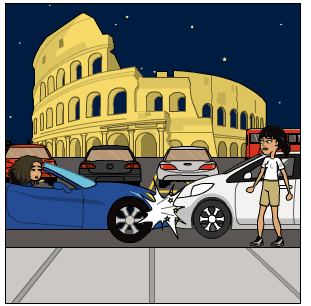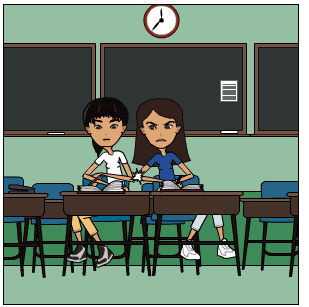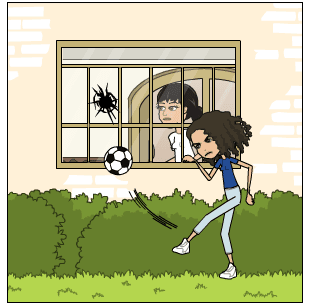Attention, Memory, & Peer Conflict
We are using eye-tracking technology to understand how people interpret ambiguous conflict situations and how that relates to their past and present experiences with peer victimization. We present participants with cartoons depicting ambiguous situations, such as someone tripping another person. Was the act intentional? Was it accidental? We are also interested in how the facial expression of the perpetrator influences attention (measured via eye-tracking) and memory for the scenario.
Example cartoons:




